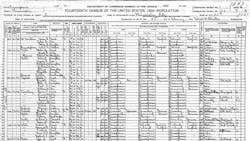Does it seem like artificial intelligence (AI) is everywhere today? It can be found in everything from transmission to distribution. Gridwise, AI is becoming the Rosetta Stone for making sense of big data, but real AI is stretching it a bit. What we really mean when talking about AI is some variation of machine learning or deep learning, autonomous computing, or augmented thinking. For most of us, AI has become the generic catchall term.
The important thing here is our smart grid needs smarter technology to keep up, and AI is providing that. Interestingly, some of this advanced data crunching technology can be imposing. Some experts suggest this tends to slow down deployment in the enterprise, and yet surprisingly, many of our customers are embracing some amazingly sophisticated big-data mining systems. I stumbled onto a good example of this when I went in for an annual physical and my doctor surprised me with a pop quiz.
Since I am getting up there in age (his words, not mine), my doctor wanted information about my family’s health history. I hate to admit it, but I failed the quiz. I knew next to nothing when it came my ancestors. Older relatives tried to educate me, but I only half listened. Now that I had some incentive, none of them are around, but that shouldn’t be an issue with the internet — right?
Quizzable Databases
I really wasn’t prepared for what I found web surfing. It turns out genealogy has become one of the most popular hobbies around. It is also a big business powered by leading-edge big-data analytics much like today’s complex asset management systems. Large commercial genealogy companies have digitized hundreds of years’ worth of just about every human record they can get their corporate hands on. They solved the challenge of mining it for useful information by taking advantage of AI-infused technology.
That is when the engineer in me took over. I needed to dig into the technology fueling this big-data industry. How could I accurately find a great grandfather with very limited information (i.e., no point of origin, birth date, misspelled name)? More surfing revealed these companies were using big-data analytic programing methods with predictive modeling boosted with AI. In effect, this makes the search engine very user friendly and relatively simple to use. Again, much like the asset management systems in use on the smart grid.
Keep in mind, these genealogy databases are extremely large in every sense of the definition of big data, which was another area that got my attention. To give an idea of how big the data is, one of the largest genealogy database companies claims to have over 10 billion digitized historical records and 10 million DNA participants. The company went on to say millions of bytes were being added weekly to its database.
Another report talked about a different genealogy company with a database of 51 quintillion bytes. These are records with dozens of entries per page. Look at a census form for an example. They are complex and have to be able to be searched on various topics. If you’ll remember, it was one of my first Charging Ahead (June 2019) editorials that I tried to put big data into a physical perspective.
I had found out that worldwide we produced about 2.5 quintillion bytes of data every day (a quintillion has 18 zeros in it). That amount of bytes, if converted to pennies, would produce 5 layers of pennies covering the entire surface of the Earth. If the 51 quintillion bytes were converted to pennies, which would be about 102 layers of pennies, and that represents only one of the many genealogy companies out there.
No matter how you look at it, genealogy has morphed into a very sophisticated data analyzing technology. It also has been made so user friendly that anyone can utilize it with little to no training or experience. The user sets basic parameters and the system retrieves specific information. It works seamlessly for non-technical people, which is ideal for both the front and back offices of the enterprise.
With all the technology integrated into the system, experts are calling our grid self-aware, but it’s producing a data tsunami for the stakeholders. With modern asset managing systems that shouldn’t be a problem, but many think the complexity of these systems require graduate level training to operate them. Our customers have proven that notion is the wrong way of thinking!
About the Author
Gene Wolf
Technical Editor
Gene Wolf has been designing and building substations and other high technology facilities for over 32 years. He received his BSEE from Wichita State University. He received his MSEE from New Mexico State University. He is a registered professional engineer in the states of California and New Mexico. He started his career as a substation engineer for Kansas Gas and Electric, retired as the Principal Engineer of Stations for Public Service Company of New Mexico recently, and founded Lone Wolf Engineering, LLC an engineering consulting company.
Gene is widely recognized as a technical leader in the electric power industry. Gene is a fellow of the IEEE. He is the former Chairman of the IEEE PES T&D Committee. He has held the position of the Chairman of the HVDC & FACTS Subcommittee and membership in many T&D working groups. Gene is also active in renewable energy. He sponsored the formation of the “Integration of Renewable Energy into the Transmission & Distribution Grids” subcommittee and the “Intelligent Grid Transmission and Distribution” subcommittee within the Transmission and Distribution committee.
